
|
![]()
Greatest Films of the 1980s
1980 | 1981 | 1982 | 1983 | 1984 | 1985 | 1986 | 1987 | 1988 | 1989
Title Screen Film Genre(s), Title, Year, (Country), Length, Director, Description 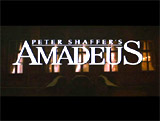



Amadeus (1984), 158 minutes, D: Milos Forman
Milos Forman's stunning, opulent, Best Picture-winning biography and compelling character study (not always 100% accurate, however) of musical prodigy Wolfgang Amadeus Mozart, was based on the Broadway play by Peter Shaffer (whose screenplay adaptation won him an Oscar). It was perhaps Forman's grandest production, equaling his earlier Best Picture winner One Flew Over the Cuckoo's Nest (1975) that was only challenged by his later film The People vs. Larry Flynt (1996). Amadeus was well-received by both critics and audiences alike with its lavish set and period costume design (filmed on location in Prague), its accessibility and non-pretentiousness, and its sly intelligence and musings over the capricious nature of "God-given" talent. In the film's opening set in 19th century Vienna (Austria), the official but obscure royal composer - an aging Antonio Salieri (1750-1825) (Oscar-winning F. Murray Abraham) for Austrian Emperor Joseph II (Jeffrey Jones), was convalescing after an attempted suicide for his admitted murder of great 36 year-old musical prodigy Wolfgang Amadeus Mozart (Tom Hulce). During an end-of-life confession in an asylum-sanitarium to young priest Father Vogler (Richard Frank), the demented Salieri told an amazing, lengthy intercutting flashback of his envious loathing, yet reverential relationship to Mozart, who was portrayed as simultaneously irresponsible, spoiled, vulgar, childish, and dissolute but immensely talented. The mediocre Salieri revealed how he was slowly tormented and driven insane as he ironically recognized Mozart's incredible musical genius and brilliance, but was consumed with insecurity, bitterness and jealousy. The self-hating Salieri believed he had been betrayed and mocked by God through Mozart, and had no interest in penance, but would rather denounce God. When he first met Mozart, the austere Salieri was disgusted and shocked by the prodigy's brash and crude hedonism with full-figured commoner Constanze (Elizabeth Berridge), his landlady's daughter, whom Mozart would marry. It angered Salieri that Mozart's talent was so effortless - and always mocking him with shrill and high pitched giggles of laughter - and that he composed music without ever making corrections. A turning point came when Salieri attended Mozart's performance of Don Giovanni following the death of his estranged and disapproving father Leopold Mozart (Roy Doltrice) in Salzburg, Germany - it was clear to the sinister Salieri that he should now vengefully bring about Mozart's downfall. The deceitful Salieri disguised himself with a black cloak and mask (to remind the guilt-ridden Mozart of his father) - and came to Mozart as a messenger, to compel the sick, now-alcoholic and ailing Mozart to accept a commission to write a Requiem Mass. As Mozart struggled with the composition and was slowly dying, Salieri fantasized that the Requiem would be performed at Mozart's funeral - and that he would claim it as his own work after Mozart's death: ("A great mass of death! Requiem mass for Wolfgang Mozart, composed by his devoted friend, Antonio Salieri!"). Desperate for income and finding Constanze had deserted him after a night of debauchery, Mozart went ahead with Salieri's demands to immediately finish the mass by dictating it to him. Just before Mozart's passing, Constanze returned to take possession of the inspired composition and lock it away from Salieri. Mozart's body was dumped into a pauper's mass grave - his unceremonial death ended Salieri's flashback to the priest, who was horrified by the tale from 32 years earlier. Salieri became further insane as he denounced God as cruel: ("He (God) killed Mozart and kept me alive to torture! 32 years of torture! 32 years of slowly watching myself become extinct"). As he was wheeled away on the brink of madness, Salieri credited himself as the patron saint of mediocrity: "I speak for all mediocrities in the world. I am their champion. I am their patron saint....Mediocrities everywhere... I absolve you... I absolve you... I absolve you... I absolve you... I absolve you all."

Beverly Hills Cop (1984), 105 minutes, D: Martin Brest
See Beverly Hills Cop series.
The fish-out-of-water comedy starred unknown Brooklyn comic Eddie Murphy, initially on TV's Saturday Night Live, who was propelled to stardom with this series. This film was his highest-grossing live-action movie, and the biggest box-office hit of the year (at $234.8 million), barely edging out Ghostbusters (1984) at # 2 with $229.2 million (domestic). Fast-talking, smart-mouthed Axel Foley (Murphy) - an undercover Detroit police detective, was engaged in a relentless pursuit from his hometown to the city of Los Angeles. Foley was searching for the killers of his old "hoodlum friend" and ex-crime partner "Mikey" Tandino (James Russo). The street-smart, reckless cop was continually at odds with the Beverly Hills police department as he brought the killers to justice.


Blood Simple (1984), 97 minutes, D: Joel Coen





The Bounty (1984, US/UK), 130 minutes, D: Roger Donaldson




Choose Me (1984), 106 minutes, D: Alan Rudolph

Dangerous Moves (1984, Switz./Fr.) (aka La Diagonale du Fou), 100 minutes, D: Richard Dembo
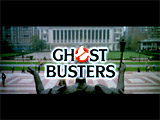

Ghostbusters (1984), 107 minutes, D: Ivan Reitman
Director Ivan Reitman's successful sci-fi fantasy comedy told about a trio of eccentric parapsychologists called upon to investigate hauntings in various NYC locations. It featured the catchy theme tune: "Who ya gonna call? - Ghostbusters!" and the film's logo: a red-lined "No Ghosts" sign. Its tagline was: "They're Here to Save the World." In the film's opening, an unorthodox group of three unusual Columbia University parapsychologists: Dr. Peter Venkman (Bill Murray), Dr. Raymond Stantz (Dan Aykroyd), and Dr. Egon Spengler (Harold Ramis) were called upon to investigate a recent sighting of ghosts in the basement of the New York Public Library stacks. Later, after discovering that their funding at Columbia had been revoked, the threesome decided to go into the offbeat business for themselves as paranormal, supernatural exterminators to eliminate poltergeists, spirits, and ghosts. The group, now known as "GHOSTBUSTERS," used the funds from the mortgaging of Ray's childhood home to purchase and set up their headquarters and services in an abandoned, unused, and dilapidated "fixer-upper" firehouse. Janine Melnitz (Annie Potts) was hired as their new secretary and receptionist, although business was non-existent - no calls, no messages, and no customers. Classical concert cellist Dana Barrett (Sigourney Weaver) lived at 550 Central Park West in a huge, ominous-looking residential building known as the Ivo Shandor Building (with statues of scary growling dog-creatures on its roof). Upon her return via taxi with groceries, she was pestered by her nerdy accountant neighbor Louis Tully (Rick Moranis) who lived across the hall. She realized that her refrigerator was a gateway to an "other-worldly" spiritual temple, and a small demonic dog-creature growling a single-word: "ZUUL." Shortly later, she summoned help from the Ghostbusters at the firehouse, and Venkman insistently volunteered to help her, as a way to acquire a date. Shortly later, the Ghostbusters were hired to immediately remove a gluttonous green ghost named Slimer from the upscale Sedgewick Hotel. During the attack, Venkman delivered a one-liner exclamation to Ray: "He slimed me!" after being covered in dripping slime. After entrapping the ghost, the Ghostbusters became famous and were forced to hire a fourth Ghostbuster Winston Zeddmore (Ernie Hudson). As one of the Ghostbuster customers, Dana became involved with the demons and was possessed by ancient demi-god Zuul (the "Gatekeeper"). Through her refrigerator, their apartment building had become a gateway for hell. Her nerdy accountant neighbor Louis also became possessed as the "Keymaster" (aka Vinz Clortho). Venkman arrived for a date with Dana and had to pretend to be the "Keymaster" in order to be allowed inside her apartment. He was seduced by the possessed Dana writhing and levitating atop her bed. Throughout the film, EPA agent/lawyer Walter Peck (William Atherton) expressed his suspicions about how the Ghostbusters had established an unlicensed storage facility for captured ghosts. His shutdown of their containment unit storage facility had devastating consequences - the destructive blast released hundreds of captured ghosts back into NYC. The Ivo Shandor building where Dana and Louis lived was functioning as an antenna to attract and concentrate spiritual energy to summon Gozer and bring about supernatural chaos and the apocalypse. Although the Ghostbusters were briefly jailed, NYC's Mayor Lenny Clotchof (David Margulies) released them to deal with the dangerous ghost problems, prove themselves, and save NYC. Meanwhile, Dana and Louis were reunited respectively as Zuul - the Gatekeeper and as the Keymaster, and they shared a passionate kiss, before proceeding to the building's rooftop to open up a gateway to the ghostly-spectral dimension, and await the arrival of Gozer. In the film's conclusion set atop the skyscraper, the Ghostbusters were confronted by the monstrous god Gozer, first appearing in the shape of a woman, the Gozerian (voice of Paddi Edwards, and portrayed by supermodel Slavitza Jovan). The Ghostbusters with full strength in their proton-pack charges neutronized the "nimble little minx." However, Gozer's booming, disembodied voice demanded that they choose or select her next physical form: "Choose the form of the Destructor!"; Ray tried to clear his mind, but was the only one to think of something, and Gozer reappeared as an evil, menacing, tall monstrous 'destructor' - a giant, 100 foot tall Stay Puft Marshmallow Man, selectively imagined to be harmless by Ray. The Marshmallow Man - a gigantic, 10-story tall figure terrorized the streets, resembling King Kong (or Godzilla) as it lumbered through the narrow avenues. Spengler suggested a "radical" idea - that the team members cross their proton energy streams at the dimensional gate in order to generate a positive energy influx big enough to destroy the gateway door, and to obliterate Gozer's portal. The strategy was successful, and the previously-possessed Dana and Louis were freed when they emerged from the burned, hardened, but broken wreckage of the Terror Dog statues (with roasted hair), and were rescued. Everyone exited to the street level to depart in the Ecto-1, while Louis was ignored and taken away in a Red Cross vehicle.
The Home and the World (1984, India) (aka Ghare-Baire), 140 minutes, D: Satyajit Ray




The Killing Fields (1984, UK), 141 minutes, D: Roland Joffe


The Natural (1984), 134 minutes, D: Barry Levinson
Director Barry Levinson's allegorical and mythical fairy tale film about baseball was based on Bernard Malamud's 1952 story, with a soaring score by Randy Newman. It featured Robert Redford as Roy Hobbs - a "naturally"-gifted baseball-playing prodigy whose life and sports career were sidetracked when he was shot by a mysterious, disturbed woman. 16 years later, he made a miraculous comeback and led his New York Knights team to the World Series. So many magical elements came together to create this romanticized film - a Babe Ruth-like slugger named "The Whammer" (Joe Don Baker), Hobbs' unexplained silver-bullet shooting, and a legendary "Wonderboy" bat (with a lightning bolt inscribed on it and carved out of a tree struck by lightning - reminiscent of Excalibur in the heroic King Arthur knights tales). The film concluded with the fulfillment of Roy's heroic quest - and his reunion with a pure "lady in the white dress" who had repeatedly inspired him and watched him from the stands. She was his childhood sweetheart and naive ex-girlfriend Iris Gaines (Glenn Close), with whom he had unknowingly produced an out-of-wedlock child.
A Nightmare on Elm Street (1984), 91 minutes, D: Wes Craven
See series of A Nightmare on Elm Street films.
Craven's horror film single-handedly revived the teens-in-terror slasher flick sub-genre, and ultimately became a major franchise. It revealed his intellectual fascination with the subconscious, multi-layered psychic worlds, dreams and nightmares. He created one of the most well-known horror characters - the sexually-deviant, reincarnated, sadistic, hideously-grotesque child killer Freddy Krueger. The premise of the series was that the children of Freddy's past persecutors - now grown-up teens (who were at odds with their parents) - who fell asleep would experience Freddy's haunting and returning presence from Hell. The film elevated the prototypical slasher film into an inventive story about the intersection of surreal nightmare worlds and the real world (e.g., a geyser of blood pouring from a victim's bed). For a showdown with Freddy, smart and resourceful teen heroine (Heather Langenkamp) decided to play by 'dream rules' and tricked the dream demon into entering her reality so she could defeat him on her own turf.

Once Upon a Time in America (1984, It./US), 227 minutes, D: Sergio Leone


Paris, Texas (1984, UK/Fr./W. Germ.), 147 minutes, D: Wim Wenders
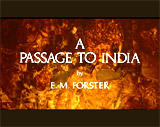

A Passage to India (1984, UK), 163 minutes, D: David Lean

Places in the Heart (1984), 112 minutes, D: Robert Benton
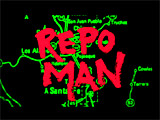




Repo Man (1984), 92 minutes, D: Alex Cox
Director/scriptwriter Alex Cox's off-beat, R-rated debut cult film with a punk/New Wave sensibility - a hybrid sci-fi black comedy crime film similar in plot to Kiss Me Deadly (1955) (and its nuclear Pandora's box), was about car repossession in Los Angeles and possible extra-terrestrials (ETs). Some of the characters were named after beer brands, for example: Bud, Miller, Oly, and Lite. In the film's classic opening sequence - government scientist J. Frank Parnell (Fox Harris), the driver of a dilapidated 1964 Chevy Malibu sedan, was on a journey from Los Alamos, NM (the site of secret nuclear experiments and research) to California's Mojave Desert and ultimately Los Angeles. When a motorcycle cop stopped him and opened the trunk, despite warnings: ("You don't wanna look in there"), he was immediately vaporized down to his semi-melted, smoking leather boots. Parnell continued his drive to LA, where in another strand of the story, punk rocker Otto Maddox (Emilio Estevez) was introduced. He was a nihilistic, disaffected grocery store stock clerk who was soon unemployed, and then lured to work in the predatory world of automobile repossession by laid-back, master repo-man Bud (Harry Dean Stanton) at the Helping Hand Acceptance Corporation. Shortly later while driving a repo car, Otto picked up activist Leila (Olivia Barash) who worked at the United Fruitcake Outlet - she was part of a secret underground network of renegades who believed in the existence of ETs or extraterrestrials and life in outer space. She claimed that there were bodies of four radioactive dead aliens being smuggled from the Los Alamos AF base in the trunk of the 1964 Chevy Malibu driven by one of the base's scientists. Her underground renegade network issued a $20,000 bounty 'wanted notice' for the Malibu to Helping Hand - the reward for locating the car (and its trunk's contents). Meanwhile, the sickened lunatic Los Alamos scientist Parnell - driving the Chevy Malibu, arrived in LA, where he was pursued by a variety of deranged characters, including government agents. Otto was picked up by the lobotomized "loonie" Parnell (whose mind was 'eroding') who offered him a hitched ride in the Malibu. Soon after, Parnell passed out and died from radiation sickness due to prolonged exposure. The film's crazed and climactic conclusion consisted of many twists and turns regarding the car's possession (when many of the characters reconverged). Otto was eventually reunited with Bud back at the Helping Hand repossession lot where Bud was sitting in the glowing, bright-green Malibu. Otto warned him to be sensible: "Only an asshole gets killed over a car." The defiant Bud, who attempted to defend his claim to the car, was machine-gunned by a sniper-agent in a circling helicopter and then died in Otto's arms. The Malibu (with sparks) emitted a mysterious, blinding light force field and held back or incinerated anyone who approached close. In the film's final moments, Helping Hand mechanic Miller (a believer in aliens - a time traveler?) was easily able to slide behind the wheel to go for a "spin" and summoned Otto to join him as a passenger. During a euphoric, cosmic drive for both Miller and Otto, the car miraculously levitated, sped away across the LA skyline, and then blasted into interplanetary outer space.


Romancing the Stone (1984), 105 minutes, D: Robert Zemeckis





A Soldier's Story (1984), 101 minutes, D: Norman Jewison
This well-crafted drama that examined racial hatred was set in 1944 (during World War II) at Fort Neal, a segregated Southern military post and base for black platoons. In the shocking opening, hated tyrannical black drill instructor Master Sergeant Vernon Waters (Adolph Caesar) was found shot to death (with a .45 caliber pistol) outside the base on a road in the town of Tynen, Louisiana. During the investigation (told through various interrogations and flashbacks) by tough, serious African-American attorney Captain Davenport (Howard E. Rollins) brought down from Washington, DC, it was at first thought that the drunken Waters was killed by white officers or the Ku Klux Klan, but they were quickly ruled out. Davenport faced many obstacles in his investigation: deceit, prejudice, lack of cooperation, a resistant chain of command, and black troops who were afraid to talk. Commanding officer Colonel Nivins (Trey Wilson) limited Davenport's official inquiry to only three days. Many of those questioned, including a number of fellow soldiers (black and white), had a motive to kill Waters. Davenport discovered that the unpopular Waters had denounced illiterate, guitar-strumming "Geechee" C. J. Memphis (Larry Riley) as a shameful example of the black race: "The Black race can't afford you no more. There used to be a time, we'd see someone like you singin', clownin', yassuh-bossin'... and we wouldn't do anything. Folks liked that. You were good. Homey kind of nigger. When they needed somebody to mistreat, call a name or two, they paraded you. Reminded them of the good old days. Not no more. The day of the Geechee is gone, boy. And you're going with it." Waters had brought trumped-up charges against Memphis, who was later driven to suicide (by hanging) in his cell while awaiting trial. Davenport also learned that only MPs and soldiers on special duty were given .45 ammunition. It was revealed that Waters was killed by unrepentant and militant Pvt. First Class Peterson (Denzel Washington) who explained that he killed Waters in revenge for driving C.J. Memphis to suicide. Peterson confessed: "I didn't kill much. Some things need gettin' rid of. Man like Waters never did nobody no good, Cap'n."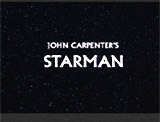



Starman (1984), 115 minutes, D: John Carpenter
John Carpenter's romantic drama and tearjerking science fiction film from Columbia Pictures told about a stranded Starman alien (who cloned himself from an energy being into the likeness of a human body through a hair strand with DNA). The film's screenplay was similar in some aspects to the fanciful friendly alien film E.T.: The Extra-Terrestrial (1982) (from Universal), about an alien learning about human life while also attempting to return home. Carpenter was chosen to helm this 'alien' picture that placed more of an emphasis on the love-story and its comedic "fish-out-of-water" tale than supernatural sci-fi elements, and with less emphasis on exploitative (and gory) special effects. After his spacecraft crash landed in N. Wisconsin after being shot down by military jets - although the alien had been invited in 1977 by Voyager II to visit Earth - the Starman (Oscar-nominated Jeff Bridges) was in a race against time to travel cross-country to Meteor Crater in Arizona, where fellow aliens in a mothership were scheduled to pick him up within three days and take him back to his home planet. He compelled the recently-widowed young wife Jenny Hayden (Karen Allen), who lived near the crash site, to take him to Arizona as his kidnapped hostage, while being pursued by belligerent NSA director George Fox (Richard Jaeckel) and sympathetic SETI scientist Mark Shermin (Charles Martin Smith). The film's complication was that the Starman had found a preserved lock of hair in a scrapbook of photos in Jenny's home, and altered his appearance by creating a cloned duplicate or likeness of Jenny's deceased husband Scott. As he began to understand the English language and Earthly life, she also began to soften to him and eventually they fell in love. Bonding between the two increased during their drive as Jenny described how she first met Scott and how their honeymoon two years earlier was so loving and "beautiful." As they sought shelter from rain in a box-car on a freight train bound for Las Vegas; they both stripped off their clothes to avoid catching pneumonia, and then made love. Afterwards, the Starman told Jenny: "I think I am becoming a planet Earth person," but then confirmed that he had to leave her: ("I must go back"); he told her that he had impregnated her ("I gave you a baby tonight"), but Jenny was understandably skeptical and disbelieving because she had been diagnosed as infertile: "No, that's impossible, I can't have a child." He described how the child would be human, but would possess all of the Starman's knowledge: "Believe what I tell you. A boy baby. He will be human. A baby of your husband, but also he will be my baby. He will know everything I know, and when he grows to manhood, he will be a teacher." Jenny was given the option to terminate the pregnancy: ("If you do not want this baby, tell me now, I will stop it"), but she refused his option and delivered her answer with an embrace and kiss. The couple were eventually able to make it to Meteor Crater in time for the mothership to pick up the Starman, due to the kindness shown by SETI scientist Shermin, although they were aggressively pursued by threatening military helicopters led by NSA director Fox. In the tearjerking conclusion, Jenny and the Starman bid each other farewell. The final image was of Jenny's face as she watched the healed Starman walk away, wave goodbye, step into a projected red light, and then rise up into space - departing on his starship to return home.

Stranger Than Paradise (1984, US/W. Germ.), 89 minutes, D: Jim Jarmusch
Jim Jarmusch's minimalist, odd-ball, stark B/W indie road film - his breakthrough film - was only his second feature. The influential, low-budget, deadpan comedy mixed the feel of a Jack Kerouac road film, a Waiting for Godot-like script written by Samuel Beckett, post-beatnik hipster 'coolness', and the glacial pace of an Andy Warhol movie. Although essentially plotless (but providing a timeless, insightful snapshot of the 80s), the film's main stylistic message was the aimless, uncommunicative, boring, and listless goals of its main characters who nevertheless formed a compelling, tight affectionate bond with each other. It followed the aimless, slacker and boring lifestyle of small-time gambler Willie (John Lurie) and his misfit hustler buddy Eddie (Richard Edson) in three settings or locations, which delineated the three-part film: NY, Cleveland, and Miami. They were on a disaffected, pointless, and low-key search for some kind of paradise. After Willie spent 10 days with his teenaged Eva (Eszter Balint), a distant Hungarian cousin who impressed him by shoplifting, he and Eddie visited her a year later in Ohio during a stark winter, and she joined them for an off-kilter trek to the tacky world of Miami where the film ended in a bizarre fashion as they parted ways.


The Terminator (1984), 108 minutes, D: James Cameron
See Terminator series.
Director James Cameron's tech-noir, action-packed, low budget, beautifully-paced, original science-fiction film starred 36 year-old Arnold Schwarzenegger in his breakout role, portraying an invulnerable, ruthless, assassin-terminator cyborg. In the opening, a future-world of a dark, ruined post-apocalyptic Los Angeles AD 2029 was portrayed; AI machines ruled the desolate world, led by a computer network called Skynet; massive machines were programmed to hunt down humans in order to exterminate the entire human race. A time traveler materialized in Los Angeles of 1984 - a "Terminator" (Arnold Schwarzenegger); the crouching, muscle-bound, powerfully-strong figure materialized nude; it was an indestructible android assassin - a humanoid-shaped T-800 Series (Model 101) with a human tissue exterior and a cold chromium/metallic, skeletal interior. A second time-traveling individual named Kyle Reese (Michael Biehn), a soldier of the Tech-Com human Resistance movement of the future (led by Resistance leader John Connor) that was fighting against Skynet, was also teleported back. Both were on a systematic search to hunt down a female named 'Sarah Connor' for unspecified but different reasons. The first killing machine mistook two other 'Sarah Connors' located in a Los Angeles telephone book for the real one. Worried about her safety, the 'real' Sarah (Linda Hamilton) ventured to the crowded Tech-Noir bar/night-club, where during a shootout in the bar/nightclub, Reese saved defenseless Sarah from being killed by the Terminator. He convinced Sarah that he was there to protect her. During their escape, Reese explained his mission and the reason for the Terminator's relentless quest to kill her; the Terminator was an assassin - a Model 101 android (or cyborg) created by Cyberdyne Systems. Reese had come back from 45 years into the future to protect her. He described one brave Resistance fighter-leader and rebel-soldier named John Connor, Sarah's future unborn son, who would eventually become a liberator and lead the revolt against the evil machines to prevent the world from being annihilated. His quest, therefore, was to rescue and save innocent Sarah's life and ensure the conception and delivery of her son who would form the Resistance movement. Criminal psychologist Dr. Silberman (Earl Boen) regarded Reese's complete story as the paranoid, insane delusions of a psychopath. To continue his assault on Reese and Sarah, the Terminator approached the heavily guarded CENTRAL DIVISION of the LA police department where the two were being held, and briefly promised the desk officer: "I'll be back." He rammed into the station with his vehicle to initiate a vicious shoot-out sequence in which he assaulted and completely destroyed the police station, as the two fugitives successfully fled to a rented room in the Tiki Motel. Reese mentioned an old faded and torn picture of her that John Connor had given him, and that he had vowed to come across time for her; he boldly asserted his love for her: "I came across time for you, Sarah. I love you. I always have"; in an affecting love scene (to the accompaniment of piano music), they clenched and held hands together, and their love-making conceived the future liberator John Connor. Soon after, the Terminator pursued after their pickup truck on a motorcycle. After a violent crash, the T-800 was run over by a massive JG Oil company tanker-truck, but he was able to commander the tanker, that was shortly later blown up by one of Reese's pipe bombs. Kyle and Sarah watched in disbelief at the unstoppable android's gleaming metal/chrome exo-skeletal frame (with glowing red eyes) that rose up from the fiery debris and gazed directly back at them. The film concluded inside a large factory building filled with giant GMF robotic, hydraulic-powered machines. During a tense chase, the self-sacrificing Kyle placed his last homemade pipe-bomb into the Terminator's open rib-cage or torso, successfully blowing its lower half away, but also killing himself. The upper-half torso of the battered but relentless android survived and continued its pursuit of Sarah. She lured it underneath a massive hydraulic press and crushed it. In the film's short epilogue, a 6-months pregnant Sarah recorded her audio thoughts for her unborn future child. At a gas station in Mexico, a Polaroid picture was taken of her by a young Mexican boy (Anthony Trujillo) -- it was the same exact picture given by Connor to Kyle Reese that he had carried with him and fallen in love with. The circularity of the film's paradox seemed complete. The Mexican boy forecast an impending storm.




This Is Spinal Tap (1984), 82 minutes, D: Rob Reiner
Director Rob Reiner's debut film was one of the funniest, improvisational parodies and satirical mockumentaries ever made. It was a typical concert film about the ill-fated, 1982 Tap Across America tour by Spinal Tap - one of Europe's loudest bands, in their first US tour in six years. The film featured non-stop hilarity, mixing both obvious gags and lampooning in-jokes, as well as many brief star cameos, like Billy Crystal as angry head waiter Morty the Mime, Fran Drescher as tough record company publicist Bobbi Flekman ("Money talks, and bulls--t walks!"), Bruno Kirby as a limo driver, and Patrick MacNee as the vacuous Sir Denis Eton-Hogg, head of Polymer Records and Hoggwood, a camp for pale young boys. The film's most famous scene was the explanation of how the band's Marshall amplifier was special: "These go to 11." Fictional director Marty DiBergi (Rob Reiner, the film's actual director) followed the members of the second-rate, fictitious heavy metal band as they promoted their new LP album Smell the Glove: blonde lead singer David St. Hubbins (Michael McKean), the cucumber-wearing bass player Derek Smalls (Harry Shearer), lead guitarist Nigel Tufnel (Christopher Guest) - who seemed to long for St. Hubbins, Viv Savage (David Kaff) - a strange troll-like keyboardist, and their shifty-eyed, cricket stick-wielding manager Ian Faith (Tony Hendra). There had been an endless string of mortal drummers (one was remembered as having choked to death on someone else's vomit, while another spontaneously combusted). The group had numerous tour misadventures: they couldn't locate the amphitheatre stage for a performance in Cleveland, were stopped at security for wearing "artificial limbs," experienced show cancellations, non-existent hotel accommodations, mechanical failures, second billing to a puppet show, an 18" Stonehenge props debacle, failed promotional appearances, and David's Yoko Ono-like girlfriend Jeanine Pettibone (June Chadwick) attempted to break up the band.